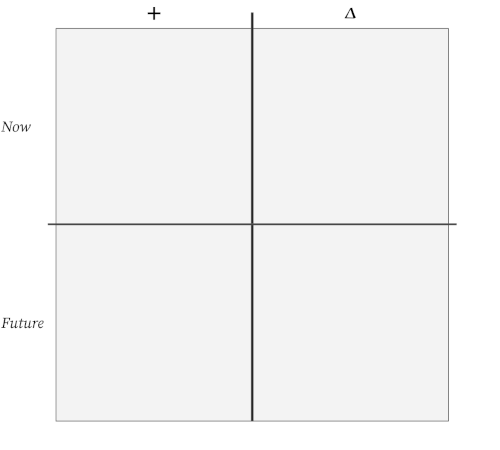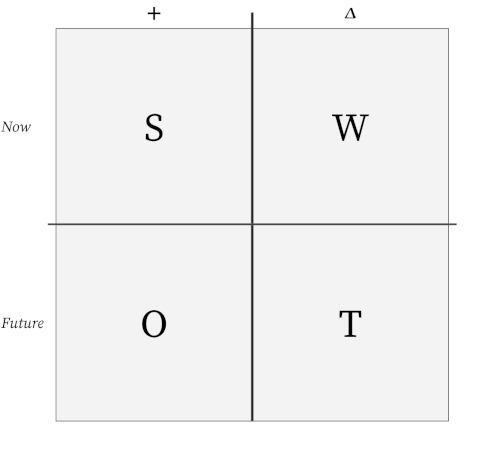 Present and future needs with SWOT
Present and future needs with SWOT
Leverage SWOT in a new way to identify present and future needs.
You may be familiar with the SWOT tool. It’s a methodology to compare options and make decisions based on an idea’s Strengths, Weaknesses, Opportunities, and Threats (SWOT). You can also use SWOT to plan for the future, and I often use SWOT in this way. I find SWOT to be an efficient tool in my manager’s toolkit to do strategic planning.
I find that in technology teams, folks can talk about Strengths and Weaknesses, because those are pretty easy concepts and most of them are probably thinking about it already. The words evoke a particular meaning. For example, IT teams may struggle to define “Opportunities.” In meetings where I’ve used SWOT, people initially think of “Opportunity” as business opportunity, which is how SWOT originally defined “Opportunity.” But for a planning exercise, “Opportunity” means ways we can leverage technology to our advantage in the future.
IT teams also can get stuck on “Threats.” The word carries a subtly different meaning in IT teams, especially for those who work in security; “Threat” means hacker. But for a SWOT exercise, “Threat” indicates future challenges.
A different approach
In my experience, it’s easier to not talk about SWOT directly, but to go at it a different way. We’ve done “Plus/Delta” exercises often enough. At the end of a meeting or after an event, we’ll talk about the things that went well (Plus) and the things we might change for next time (Delta). I’m always doing a Plus/Delta with folks after a big event or a big meeting. People know how that works.

I build on this, and break up the “Plus/Delta” into two time frames: “Now” and “Future.” I often define “Now” as anytime in the next three or four months, and “Future” as a year from now.

That’s a very easy grid to understand. People can talk about what’s going well now, and what things we should change now. And they can talk about what things will be strong for us in a year’s time, and what things we should change in the next year.
And that’s really what SWOT is about:
- Strengths (Plus-Now)
- Weaknesses (Delta-Now)
- Opportunities (Plus-Future)
- Threats (Delta-Future)

Start with a discussion
Frame the discussion at the beginning. Is the discussion about new technology? Or a possible change to the infrastructure? Or making a decision? Just make it clear at the beginning so people know how to frame their Plus/Deltas.
Also, I encourage people to take some individual time after I introduce the topic. For example, I may give them five minutes to think about it, and jot down their ideas on a piece of paper. In my experience, people are more forthcoming in the discussion when they have that individual time to organize their thoughts before getting started in the discussion.
I like to break up the room into groups of three to five people. Have each group collaborate on the SWOT. Give them fifteen to twenty minutes to review their thoughts and condense their ideas to a single SWOT list for the group. When each group has consolidated their SWOT lists, go around the room and ask each unit to share one item from each SWOT quadrant.
For example, start with Plus-Now, and ask “Group #1: Give me one item that is working well now” then move on to the next group with “Group #2: What’s something else that is working well today?” And so on. Draw the Plus/Delta, Now/Future grid on a whiteboard, and capture each idea in this grid so everyone can follow the discussion. Plan for the group discussion to take about twice the time you give the individual group time. So if you have people break into groups for fifteen minutes, I find it will take about thirty minutes to do the whiteboard discussion at the end.
